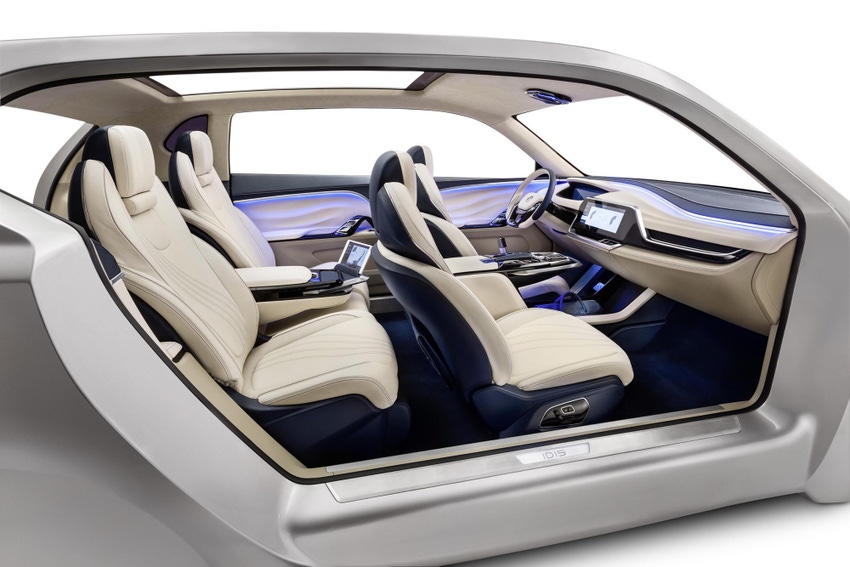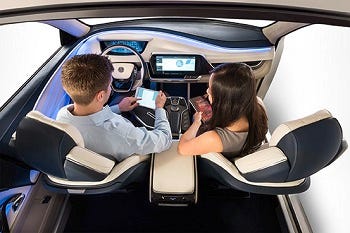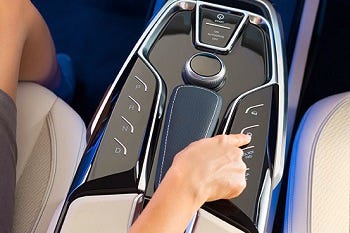Vehicles of tomorrow may require little driver interaction. To address this situation, the Innovation Demonstrator (ID15) concept interior concept for autonomous vehicles from Tier 1 company Johnson Controls (Milwaukee, WI) introduces technology that allows occupants to engage in activities beyond driving, such as working, playing, relaxing and engaging with other passengers, in a comfortable and safe environment
January 20, 2015

Vehicles of tomorrow may require little driver interaction. To address this situation, the Innovation Demonstrator (ID15) concept interior concept for autonomous vehicles from Tier 1 company Johnson Controls (Milwaukee, WI) introduces technology that allows occupants to engage in activities beyond driving, such as working, playing, relaxing and engaging with other passengers, in a comfortable and safe environment
"The design and development of this concept is based on the interior changes that are necessary to adapt to the autonomous driving experience," said Han Hendriks, vice president, advanced product development and sales, Johnson Controls Automotive Interiors. "The ID15 focuses on meeting consumers' expectations, as our customers look to us as an industry leader to help define the interior of the future."
|
The Rotating table in the Johnson Controls ID15 concept is located in a redefined floor console and combined with an 18 degree swiveling seatback. The table allows the driver to engage in activities and more comfortable interaction with second row passengers. |
|
The autonomous vehicle interior design concept features smart surface technologies to enable activation and control of various functions throughout the interior, providing an alternative solution to conventional switches. |
The ID15 concept will reportedly address automotive market demand for sustainable, cost-effective, premium solutions in the luxury segment. It features more than 30 technologies and innovations that enable consumers of autonomous vehicles to utilize non-driving time. Most of these innovations are ready to go into production immediately according to Johnson Controls, while some are more exploratory. They include:
Rotating table - located in a redefined floor console, combined with an 18 degree swiveling seatback, the table allows the driver to engage in activities and more comfortable interaction with second row passengers
Glove box sliding tray - the new functionality provides enhanced storage for mobile devices in the glove box
Smart surface technologies - integrated control technologies enabling activation and control of various functions throughout the interior to provide an appealing and higher level of craftsmanship, and serve as an alternative solution to conventional switches
Illuminated surfaces - to differentiate the experience within the interior of the vehicle, LED lighting across the instrument panel and along the side of the doors helps improve the lighting ambiance throughout, while synchronized functionally to the Auto-drive mode
Tambour door - a new solution to storage in the door panel that provides private, secure storage in the front and rear door panel, and an ergonomically accessed storage space in the center console
Multi-track tambour door - improves functionality by allowing occupants to partition and create separate storage within the floor console
Two-way sliding cool box - a fully integrated luxury feature below the multi-function console allows access to both front and rear passengers
Slim overhead console - reduces weight and package size, increasing space for vehicle occupants
Catch bin - a removable bin allows passengers to easily retrieve small items that fall between the seats and floor console
Sliding large bag storage - sliding large stowage space for large sized hand bags to be used in conjunction with cool box; and
Compression Hybrid Molding (CHyM) - lightweight, natural door panel substrate with increased stability through the combination for natural fiber and plastic
Also included in the ID15 concept are enhanced seating capabilities. Giving the driver the ability to more conveniently interact with passengers in the front and rear rows, while in autonomous mode, the "Swingback" feature holds the seat in its standard fixed position, while the upper seatback pivots 18 degrees. In addition, the rear seat features a mode, where with the press of a button, the seat reclines, and brings up the leg rest and foot rest. Simultaneously, the front passenger seat moves forward to create extra leg room. The seats in ID15 were developed for the Chinese market by the Yanfeng Johnson Controls (YFJC) automotive seating joint venture.
You May Also Like




